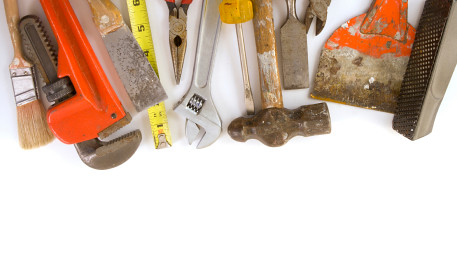Six Signs That Could Mean Expensive (Hidden) Trouble…

Cracks, bulges, stains, odors, squeaks, and tilting are easy to spot and can mean a little or a lot of trouble in any home.
The first sign of trouble that you should look for is in the foundation. You can do this by looking around the outside of the home. If you can see cracks, bulges, mold, wood rot, or listing there may be severe problems with the foundation. Bearing in mind that all concrete and asphalt will crack as it settles, hairline cracks will be acceptable; anything larger is not. These things could mean a large foundation settlement because of soil instability, or that the builder didn’t use steel reinforcements, indicating potentially slipshod work throughout the home.
You’ll have to look high to see the second sign. Are shingles rough, broken, curled, bubbled, warped, or split? Are there rotted eaves, fascia, soffits? Make sure to look for old, faulty gutters that can hide these problems. These things could indicate a leaky roof, or one that will need to be replaced in short order.
The third sign of trouble hits you when you walk in the door. How does it smell? If it smells like Fluffy or last night’s dinner – that can be fixed by carpet cleaning, and a little time and fresh air. A moldy smell could suggest mold in the ductwork, which would require a complete replacement to remove.
You’ll feel the fourth sign of trouble as you walk around inside the house. Are you walking on a slant? Do the floors squeak when you step down? Can you feel or see lumps, breaks, or cracks? As you look at the joining of the floors and walls, is there a separation?
Look to the walls and ceilings for the fifth sign of trouble. Walls that are cracked can indicate a problem with the foundation – particularly around doors, windows, and ceilings. The cracking, peeling, and bubbling of paint can indicate mold or moisture in the walls or above the ceiling. Is there a round-shaped discoloration? Is there any bubbling, cracking, or bowing in the sheetrock or paint? All of these things can indicate moisture – any sort of water leak. Depending on how big and how long the leak has been there, the damage can be as little as discoloration or as much as rotten framing timber.
The sixth sign is in the bathroom.Take the time to flush each toilet and run water in each sink. If the water pressure is overly high or overly low, there’s rusting, or poor drainage, there could be a problem with aging pipes or sewerage. These six things are easy to spot, but a professional home inspector can tell you the real underlying problems and estimate the cost of repairs.


